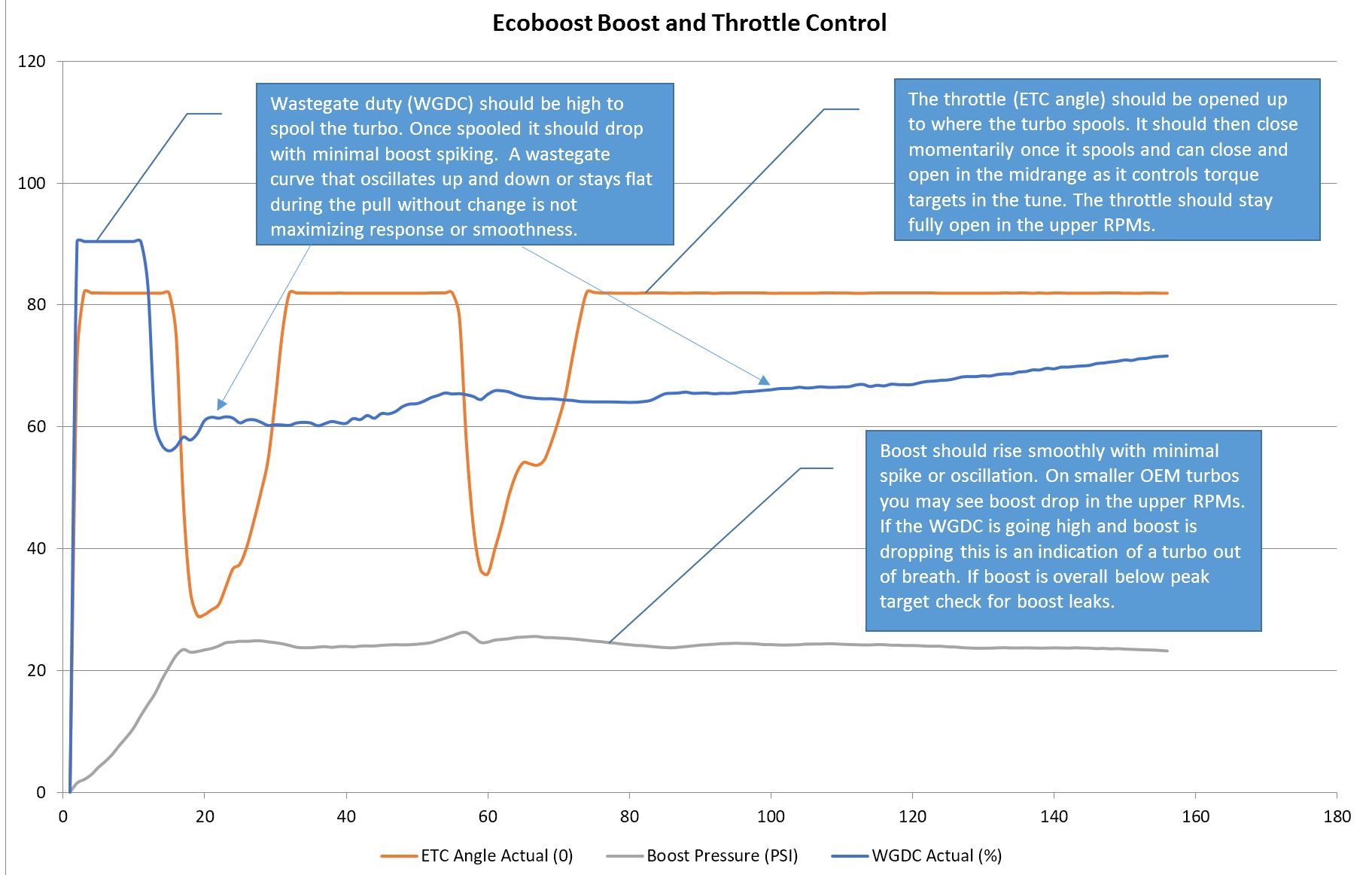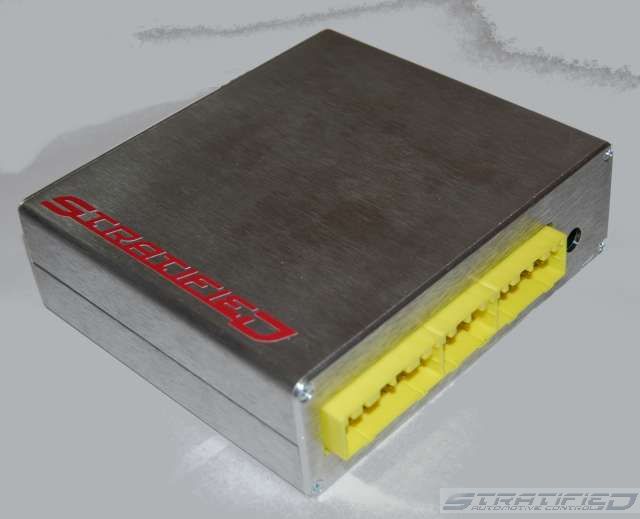Category Archives: Uncategorized
Protected: Stratified Ford EcoBoost STOCK TURBO Flash Tune User Manual
How the Ecoboost Works to Turn your Throttle Input into Torque Output
In the software on the ECU, there are multiple targets and limits for managing power output. The most commonly employed targets and limits will be based on torque, load, and boost.
Load and torque are closely related and they are modelled inside the ECU. Ford calls this modelling technique HDFX and it takes into account the variable cam timing of the engine. The model turns a pressure signal from the MAP and TIP pressure sensors into and air mass measurement since the car does not have a MAF sensor. This is important as for example, you will see higher calculated torque and load during cooler weather for the same boost level simply because the air has a higher density and the turbocharger flows more air mass at the same pressure.
Boost is simply that – pressure inside the manifold.
The airflow modelling has to be accurate and the model has to be tuned depending on what modifications are installed (different turbo, cams, etc). The result of this model is used everywhere – from torque targeting to spark timing to fueling.
Now, when you press the throttle, there is a torque request that then gets turned into a load request that then turns into an airflow request that then turns into a pressure (boost request) that then gets passed onto the turbocharger model and wastegate is calculated and adjusted. Whew … as you can see everything cascades down so errors along the way will also get propagated.

All this modelling must then translate into a control of the torque. There are several mechanisms to control the torque output and wastegate, the electronic throttle, and spark timing are used together. Controlling boost only using the wastegate is much slower to react than also involving the throttle, and the throttle is much slower than spark timing. Having the correct targets and limits in place for each will allow the ECU and motor to be responsive and smooth. It will also catch issues such as a line popping off the wastegate for example by closing the throttle. This will happen both at part throttle and wide open throttle.

The responsibility of the tune is to ensure that both the internal models, targets and limits are set appropriately and accurate. This results in smooth engine response to throttle input. This also avoids dangerous operating conditions such as boost that is too high due to a mechanical failure or otherwise. (Check out this article for more insight)

All the tunes we build have these principles baked in – from flash to custom – because having them all come together delivers both performance and driveability (this is believe it or not the harder one to get right) for the entire power band and driver inputs.
Happy Tuning, The Stratified Team
How to run over 29 PSI on the EcoBoost Focus ST
TL; DR – if you want to run more than 28-29psi of boost you will need to upgrade your MAP sensors with this kit:
Guardian Angel V2 Overboost Protection and 4 Bar MAP Sensor [GUARDIAN_ANGEL_V2] – $215.00USD : Stratified Automotive Controls

Now on to the details:
The 4 cylinder Ecoboost calculates fuelling, timing, engine load … all the important parameters needed to correctly and safely run the engine by measuring the pressure in the charge air system at two distinct points using two MAP (manifold absolute pressure) sensors.
1. At the manifold itself.

2. At the outlet of the intercooler. This sensor measures both pressure (TIP) and charge air temperature (CAT).

Both of these sensors are capable of reading 3 bar of absolute pressure. This translates to around 29psi of boost at sea level. In order to tune above this boost level, you must allow the ECU to read higher pressures. This requires upgrading both of these sensors with units that read higher. We have devised a solution to upgrade these sensors (a requirement for moving above 29psi safely) that is easy to install and offers several other benefits.
1. At the manifold, we use the Guardian Angel with a MAP sensor output. The Guardian Angel has an integrated 4 bar MAP sensor (measures up to 44psi of boost). Since the GA is always monitoring your boost anyway, we bring out this signal, and attach it to the wire going to the ECU. This is very easy to install (cut and splice 1 wire) and on top of it you have the key benefits of the Guardian Angel:
– Overboost protection
– Blow off/bypass valve control that is tunable and prevents the surge you see with the OEM BPV solenoid
– External input for a WMI failsafe
2. At the intercooler, we replace the MAP sensor with a genuine Bosch unit that plugs right in. You have an option of a 3.5 bar (up to 37psi of boost) or 4 bar (44psi of boost). The 4 bar is quite a bit more expensive so only get it if you need it. This secondary sensor (3.5 and 4 bar) can be purchased as an option when you get the GA.

Aside from this you need to adjust the tune for these (or we cand do it for you) (the COBB Accessport has all the tools to do this) and you will need a symposer delete to give the Guardian Angel the manifold pressure signal. We have tested the components and kit and offer it for those that are looking at pushing the boost higher and higher on the platform.
Megasquirt Plug and Play ECU update
Hi Everyone, as you may have noticed our PNP ND64 ECUs are currently out of stock. This is because we are in the middle of releasing an updated version with a couple of new features. They should be here within a month! Any questions, please Contact Us!



